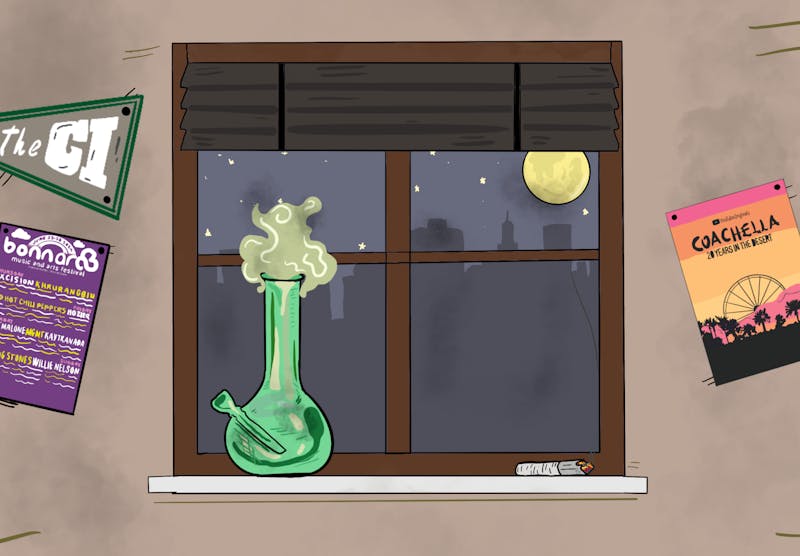In the media, a stoner might be pictured as a character in baggy street clothes, looking tired or disheveled. One might be described as a burnout, lazy or a slacker, or cast as an unintelligent person. These people are typically voiced by someone with slurred speech or the like.
Depicted negatively in a modern media, stoners tend to get a worse reputation than those who drink alcohol just as regularly. Despite the health risks and law regulations of both substances being around the same, one of them is still viewed as worse than the other. Times are slowly changing, but not enough.
In 2023, Ohio became the 24th state to legalize marijuana for recreational use because of Issue 2. Since its passing, there has been an overhaul of regulations suggested in Senate Bill 56, proposed in February. The revisions would reduce the maximum THC content in cannabis extracts and edibles and limit the number of allowed home-grown plants, among other changes. The bill was passed Feb. 26; however, it is still being considered by the Ohio House of Representatives.
The majority of negativity toward legal marijuana comes from a generational disconnect. With Generation Z, there has also come a shift in preference. For the first time, daily cannabis users have surpassed daily alcohol drinkers, with 69% of adults ages 18-24 preferring weed to alcohol.
With the shift of one generation comes the shift of others. Around 65% of Millennials, 42% of Generation X, 50% of Baby Boomers and 32% of the Silent Generation believe marijuana should be legalized. Compared to their answers to the same question in the 2008 survey, most of these percentages have since doubled.
Even with the majority of generations now more on board than ever when it comes to marijuana, there are still skeptics operating under assumptions and preconceived notions about weed users. Most of these skepticisms lie under health concerns and public safety, both very important to consider. But when posed against alcohol, they rank about the same.
Despite what many people think, there is actually more research on the long-term effects of cannabis use than alcohol. It is important to note the health risks regarding the use of any and all drugs. Brain development, medication interactions and addiction are all important things to note.
It’s much easier to cause liver damage or even death with excessive alcohol use than it is to trigger any lethal consequences with marijuana. They are still possible, and high doses of THC are known for causing intense hallucinations and anxiety. Moderation is key with all things, but especially with either of these substances.
Having negative stereotypes around a regulated substance like marijuana makes messages around safety less effective. But with any and all drug usage, there will be a lack of motivation and a level of laziness involved. Drugs like these aren’t meant to be used as crutches, as alcohol and cannabis are both still depressants. They are meant more so for leisure activities.
If it’s being used the same as alcohol in a socially normal context, there is no reason for weed to be so negatively viewed any longer in Ohio. Senate Bill 56 is set to address additional public safety concerns and set stricter standards to prevent sales to minors in the future. There is a bright future for weed in Ohio, but only if people are willing to put the negative outlook on it to rest.
BudPost is a cannabis opinion column that does not reflect the views of The Post.
Drinking culture, specifically in the U.S., is more normalized than recreational marijuana use despite similar health risks and legal status. Read More


